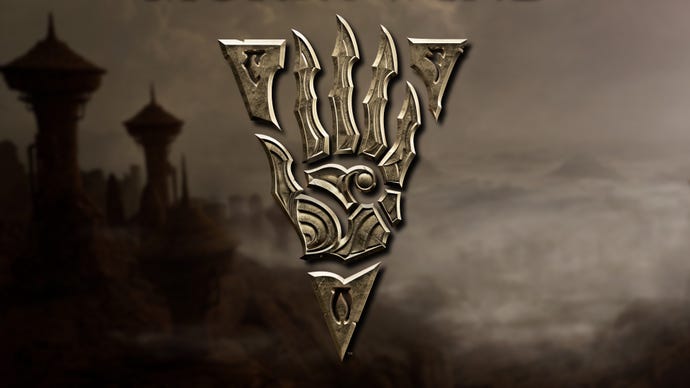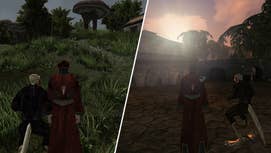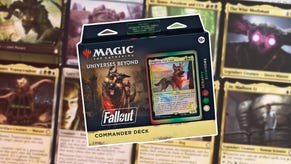The Elder Scrolls Morrowind at 20: Bethesda's total-immersion RPG that changed everything
As Morrowind enters its third decade, we examine why Bethesda's quirky RPG was so impressive – and why the games that followed couldn't hold a candle to it.
Twenty years is an obscene amount of time for Morrowind to have existed. Rude, frankly. For it to still be so eminently playable, for its influence to still be so acutely felt on modern games after two decades – which may as well be two centuries in a medium so entangled with technological advancement – is nothing short of astounding.
As much time has passed between us and Morrowind’s release as had passed between it and the launch of the Commodore 64 in 1982. Back then, the big RPGs were Ultima and Wizardry. Hugely influential in their own right, they set the standard for role-playing games as computerised versions of their tabletop equivalents. Arcane stat sheets. Numerous, baffling game screens with confusing user interfaces. And, for those with the patience, utterly enchanting; vast worlds to explore, full of little towns to mooch around in and characters to converse with and/or rob.
But relatively few people had the patience for cRPGs, and so it remained for years. Their popularity would grow through the 80s and 90s, of course, as the promise of ever more interesting worlds to explore encouraged people to learn the systems they needed to learn in order to be granted access to them. Compared to, say, platformers or shooters, RPGs have always had a time-to-fluency disadvantage. The fundamentals of Mario or DOOM are intuitive – anyone in 2002 who knew which way to hold a controller could enjoy those games with zero instruction. Sit them in front of Ultima II’s character creation screen, however, and they’d simply ask to be excused from this hypothetical, thank you very much. I’m sorry, but what the f**k is INT? And how’s it different from WIS?
Morrowind changed all that. Well, that’s a lie, it didn’t. But it set the stage for something which, depending on who you ask, either ruined the genre forever or propelled it to greatness: the start of a tectonic shift that would lead to the Blockbuster RPG.

Morrowind’s brilliance, as with the rest of the Elder Scrolls series, isn’t in its story, setting, or characters – which are p**s-thin at the best of times. It’s in the way you inhabit, and have agency within, its world. See a bottle on a shelf? Grab it. See a pocket? Pick it. See that outcrop? Go there. Stand on it. Peer into the fog. Look, draw distance was limited in those days. It wasn’t a game so much as it was a place to go. A new land teeming with secrets, and a bunch of interlocking systems through which you, the punter, could have a meaningful presence there.
Morrowind tore down every barrier it could between the player and its world, simplifying as many of its interactions as it could. How do you get to the next town? Well, you walk there. Or, take a taxi (giant cockroach thing with seats). No more complex multi-click fast travel procedure involving a free-text search box and the genuine possibility of accidentally going to one of five-dozen similarly named hamlets to the one you were after, like in the previous game, Daggerfall. So, you wanna go somewhere? You just go, like in the real world. Wanna swing a sword? Swing it. We’ll handle the maths (sorry in advance).
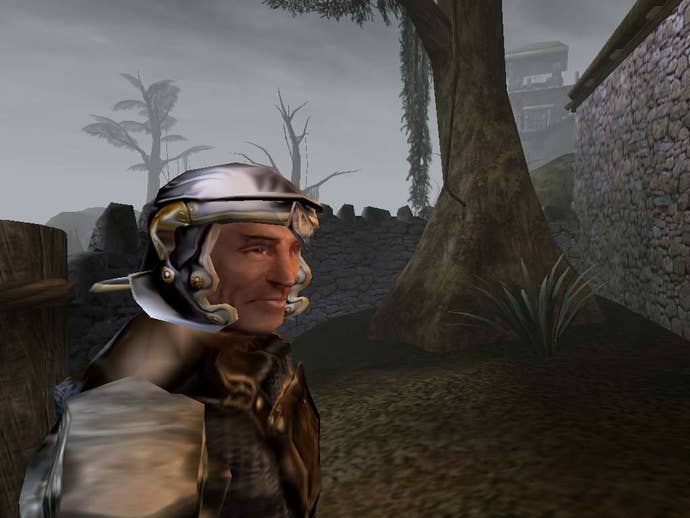
Morrowind was designed, quite consciously, as an antidote to Daggerfall’s bloat. Between the two games, entire skills and spell types disappeared from the character sheet, either being folded into other stats or unceremoniously binned. Daggerfall’s insufferably vast, procedurally generated landscape of Lego towns was dropped in favour of a small, hand-made island of wonders that was less than 1% of the size and about forty-billion times more interesting. Every settlement in Morrowind is distinct. Unique. Instantly recognisable from signature landmarks, in the way that real world cities are.
This process of streamlining The Elder Scrolls wasn’t just about jettisoning faff, or even about enhancing immersion; it was about redefining what the cRPG experience means, understanding the difference between ‘large’ and ‘epic’. It also had, as it’s clear in hindsight, an extraordinary side benefit: it prepped the genre for primetime, in living rooms. Vvardenfell might have been microscopic in size compared to the Iliac Bay, but it was bigger in every metric that mattered. Cinematic in its ambition. Operatic in its capacity to stir the heart with its beautiful score, the main melody of which is still the hook of every subsequent Elder Scrolls theme, because you don’t meddle with perfection.
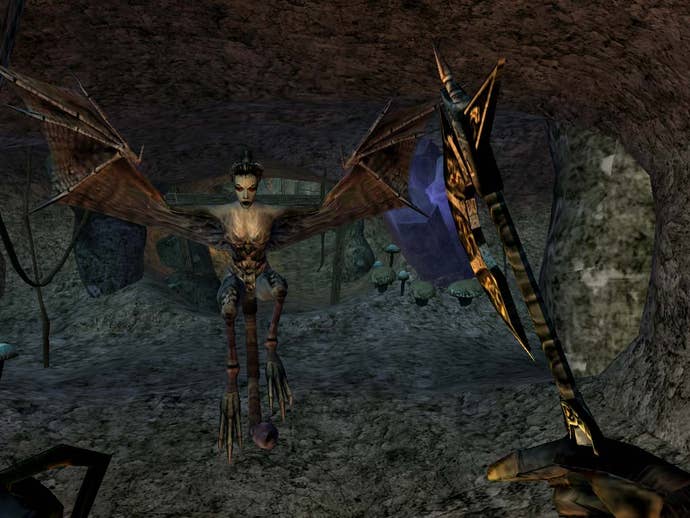
A year after Morrowind launched on the original Xbox, BioWare would release Knights of the Old Republic, a spiritual revamp of their D&D adaptations but produced under a much cooler license. Piggybacking on the success of Morrowind’s popular reinvention of the cRPG, KOTOR would prove that the doors had been fully flung open for rich, big-budget experiences that didn’t have to sacrifice complexity for mass appeal, or be from Japan, in order to succeed on consoles. BioWare and Bethesda would, between them, spend the following ten years setting the parameters of the ‘Blockbuster RPG’.
It was Morrowind’s sequel, Oblivion, which truly cemented the arrival of this exciting new subgenre. A defining game of the Xbox 360 era, Oblivion was filled with welcome quality-of-life updates, and focused aggressively on immersion; employing over-bloomed 720p graphics, Havok physics on every single object, and even fully-voiced dialogue as a show of commitment to the player that they will never have to consider that they are not the Hero of Kvatch, but a weird goblin person in a dingy 2-bed terrace in Croydon who lives on KFC and Wotsits. That might be a bit specific.

As the quintessential Blockbuster RPG, many consider Oblivion to be a regression. Progress looping back on itself to diminishing returns. Sporting an early, possibly very first example of the dreaded Open World Compass, Oblivion simplified proceedings to a point where players didn’t even have to figure out where to find s**t any more. They just had to aim in the rough direction of Assassination Target A or Supposedly Lost Treasure B and launch themselves forward, less like an orienteer and more like a trebuchet for agency. This is in stark contrast to Morrowind, which was obtuse to the point of pisstaking about telling people where to go. Go north until you come to a big rock. Head left. Spin three times near the abandoned hammock and crouch, the entrance will appear for nine seconds. If you’re lucky.
In the decades since, with parallel trends for high difficulty and low barriers pulling the RPG in every possible direction, and the surprising RPG-ification of every other genre to the point where the difference between an Action Game and a Role-Playing Game is mostly in the eye of the beholder, Morrowind’s influence continues to loom large. The success of The Witcher 3, arguably the most significant RPG ever released, owes a great debt to the inroads made by Morrowind. The most recent Assassin’s Creeds, with their structure lifted wholesale from The Witcher 3, epitomise the Blockbuster RPG and its full-blown annexation of the living room as well as every adjacent genre. They even have a Morrowind mode – or ‘exploration mode’ – where the game will give you written directions to a quest item instead of a GPS marker.
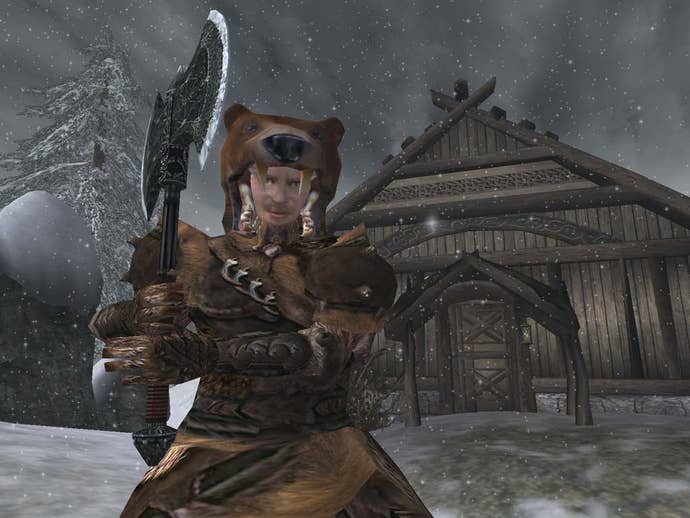
So here’s to Morrowind; the connoisseur's favourite Elder Scrolls, progenitor of the Blockbuster Role-Playing Game, and punchline of many jokes at my expense in the secret games media WhatsApp groups on account of how often I’ve written about it. As if it’s my fault that it continues to be so fascinating, and relevant, after all this time.
One of the medium’s genuine classics, may it forever be the standard to which bearded weirdos hold every new release. It might not have been the game-changer that its immediate successors were, but without this crucial piece of RPG history, things would look a lot different. And I’d be down by about four grand.
